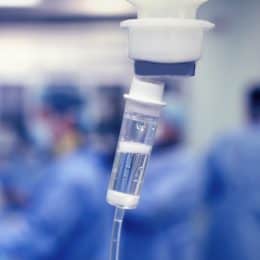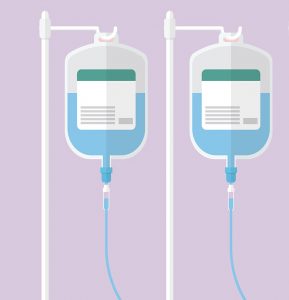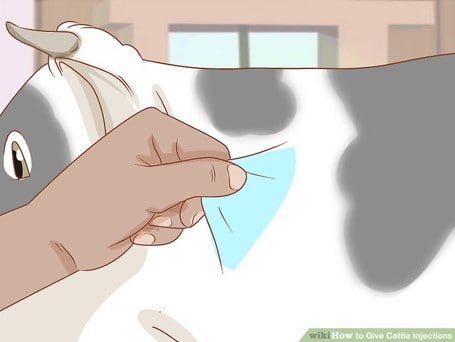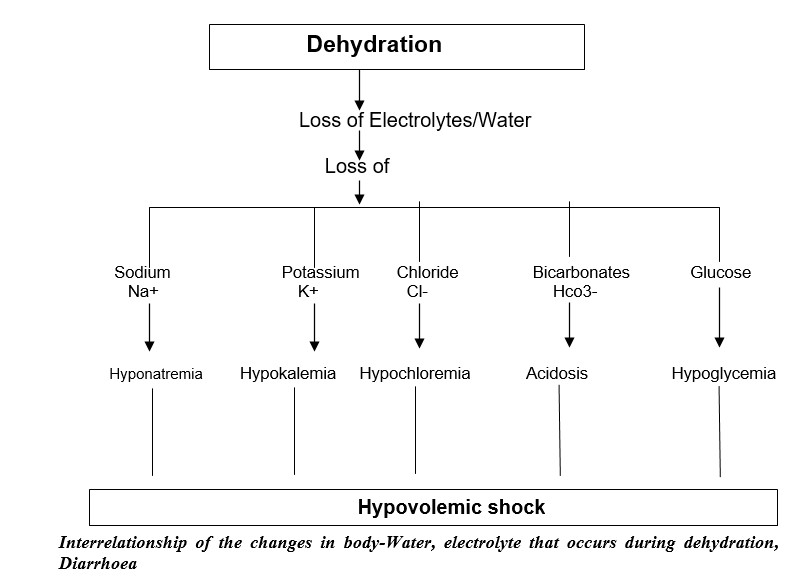
Fluid Therapy in Veterinary Clinical Practice
Importance of Fluid Therapy
It is an important and life-saving treatment applied in day to day veterinary practice. The purpose of fluid therapy is to correct dehydration and/or electrolyte imbalances or metabolic imbalances and if need be, energy losses. There are many diseases of cattle in which there are disturbances of body fluids, electrolytes and acid–base balance. A disturbance of body water balance in which more fluid is lost from the body than absorbed results in to dehydration. The electrolyte imbalances occur commonly as a result of loss of electrolytes.

Dairy cattle and calves are very prone to suffer from diarrhoea due to infectious and non-infectious causes. These animals ultimately suffer from dehydration. Correction of dehydrated condition needs fluid therapy to provide water & balance electrolytes. However electrolyte imbalances during dehydration is more dangerous than water loss alone. The animal suffering from debility, dehydration needs dextrose as rapidly utilizable energy.
There are various ways of giving fluid therapy in veterinary practice like oral, intravenous, subcutaneous therapy. Adequate oral fluid intake with electrolytes can relive dehydration, but in sick and dehydrated animals fluid & electrolyte imbalance is impossible hence injection of fluids with electrolytes is only the remedy. In order to understand the need for fluid therapy, knowledge about dehydration & electrolyte imbalance is very important.
Dehydration and its Causes:
Dehydration denotes loss of water or electrolytes in the body. It is a disturbance of body water balance in which withdrawal of fluid (water) takes place from tissues, interstitial space and plasma results in reduction in circulating blood volume of the blood and dehydration in tissues. As dehydration progresses, the circulating fluid volume is reduced leading to haemoconcentration (blood becomes thick) and increased viscosity of blood and finally, peripheral circulatory failure or hypovoluemic shock occurs.
There are two major causes of dehydration, either failure of water intake or excessive loss from the body.
a) Failure of water intake: It may be secondary complication or clinical manifestation as a result of any disease. In this condition, cattle shows inability to consume water due to disease condition. The common examples are like painful conditions of mouth, stomatitis, FMD, pharyngitis, pharyngeal paralysis, esophageal obstruction or choke.
b) Excessive loss of water: The following are the factors contributing to dehydration
i) Diarrhoea: It is one of the major causes of dehydration. Diarrhoea means passing of loose feces leading to loss of water & electrolytes from the body. Diarrhoea may be of Infectious, Non-infectious or Parasitic in origin.
ii) Infectious agents: E coli, Salmonella, Rotavirus, corona virus, paramyxovirius, morbilivirus etc.
iii) Non infectious agents: This includes dietary causes like change in quality of feed from season to season, disturbances in Rumen pH, Indigestion in cattle like acidic & alkaline indigestion.
c) Parasitic causes: Infestation due to internal worms like round worms, tapeworms & liver flukes, protozoans like coccidia sp.
d) Diseases of Rumen: Common disorders of rumen in cattle like acidic, alkaline & simple indigestion causes disturbances in acid base balance & change in rumen pH.
e) Burn & Profuse sweating: Loss of fluid from the skin in burn cases, excessive sweating from the skin in summer leads to electrolyte imbalance & dehydration.
Clinical signs/symptoms of dehydration in animals:
The following are some of the important clinical symptoms observed in animals during dehydration.
- Dryness & wrinkling of skin
- Sunken eyes
- Loss of body weight
- Muscular weakness
- Dry mucus membrane
- Oligouria: decreased output of urine
- Anorexia

In field conditions veterinarians usually do skin fold test to diagnose case of dehydration.
What is skin fold test? What is its importance?
A skin fold test is a test in which veterinarians pinch a fold of skin on the neck, pulls it out and note the number of seconds that skin takes to return to its position.

Importance: It is one of the significant test to access the degree of dehydration in animals in field conditions. The measurement of this test can be done by observing the retention of skin fold/Seconds. One half to one second is normal.
Table showing assessment of degree of dehydration by skin fold test:

Electrolyte imbalance occurs during dehydration in animals:
Electrolyte Imbalances:
Electrolytes maintain osmotic pressure of body fluid. The electrolytes of major importance are sodium, potassium, chloride and bicarbonate. The electrolyte imbalances occur commonly as a result of dehydration. In dehydration electrolytes gets easily depleted from the body or from plasma. Diarrhoea & Dehydration in cattle results in loss of electrolytes like sodium, potassium, chloride & bicarbonates. These electrolytes are depleted from plasma of the body. The principle of usage of fluid therapy changes according to disease conditions & type of electrolyte loss. Following is graphical representation indicating electrolyte imbalances occurring during dehydration.

Administration of fluids in veterinary practice:
1) Dose: The quantity of fluid required depends upon degree of dehydration, losses occurring during the treatment, maintenance requirement of animal. The fluids are given in two stages.
a) Hydration Therapy: It is given in first 4-6 hrs by intravenous route to restore circulating blood volume and corrects electrolyte imbalances. The dose of fluid for hydration therapy is calculated as follows:

b) Maintenance therapy: It is given in next 24 hrs by oral or intravenous route following hydration therapy for maintaining restored blood volume. The maintenance dose is calculated @50-100ml/kg body weight over a period of 24 hours.
2) Route: The route of administration of fluid therapy depends upon type of disease, condition of the patient, severity of dehydration and type of electrolyte/Acid-base balance.
The fluids can be given by following routes
- Oral route
- Intravenous (IV)
- Subcutaneous (SC)
- Intraperitoneal
In field conditions, veterinarians usually prefer intravenous route for administration of fluid therapy containing balanced electrolyte solution and dextrose. The advantages of this route is required dose of hydration therapy can be given easily and fluid & electrolyte imbalance can be rapidly corrected (www.vetoquinol.in).
Dr. Vijay Muley
Head (Marketing)-Veterinary Division
Vetoquinol India Animal Health P. Ltd, Mumbai
